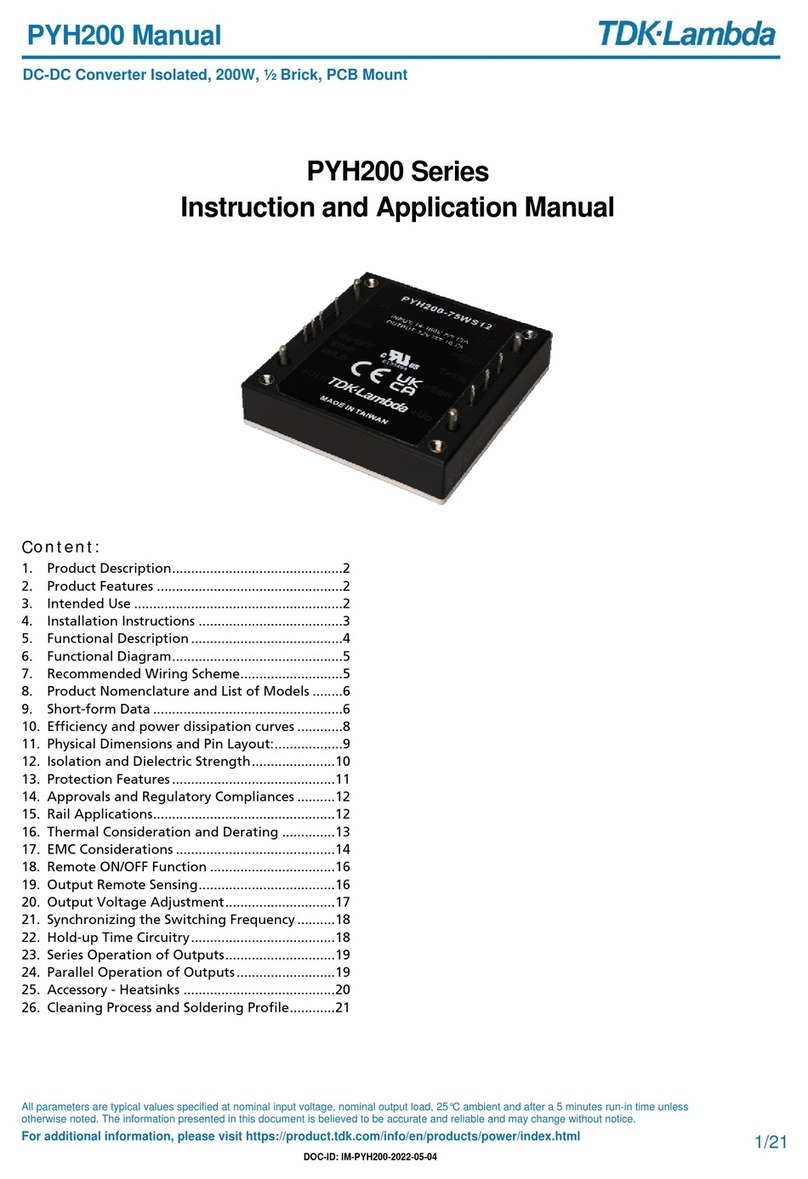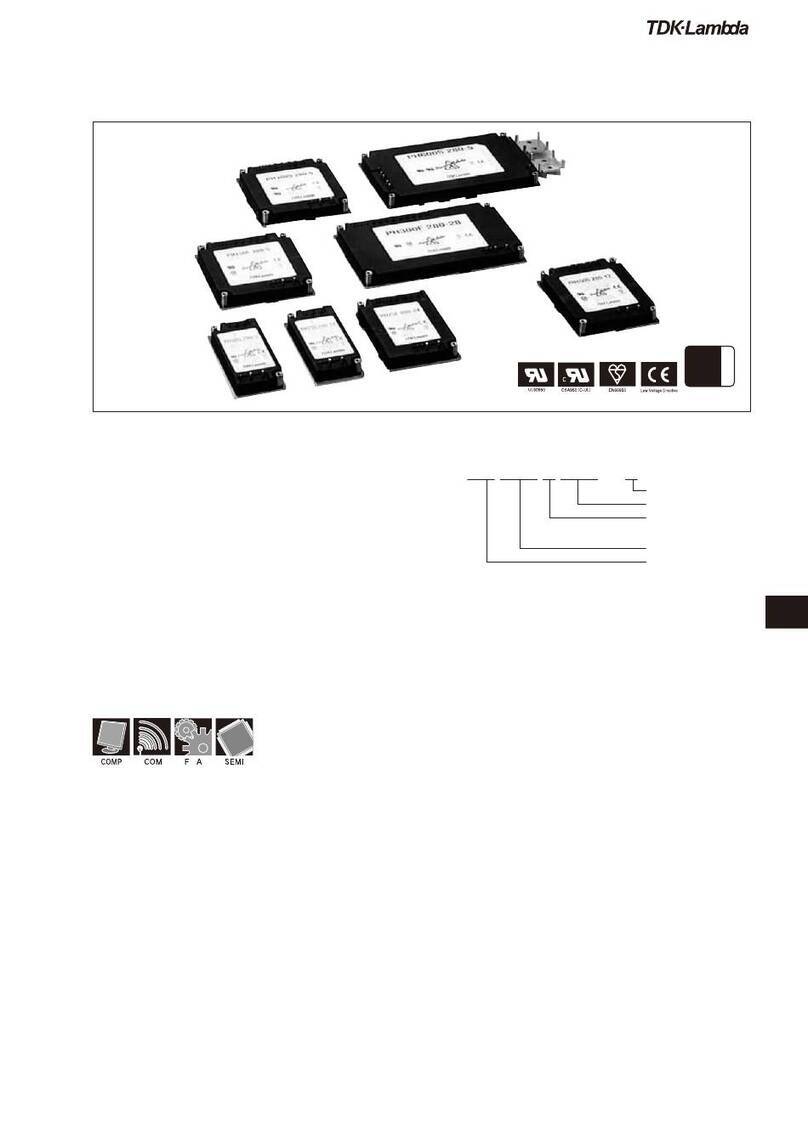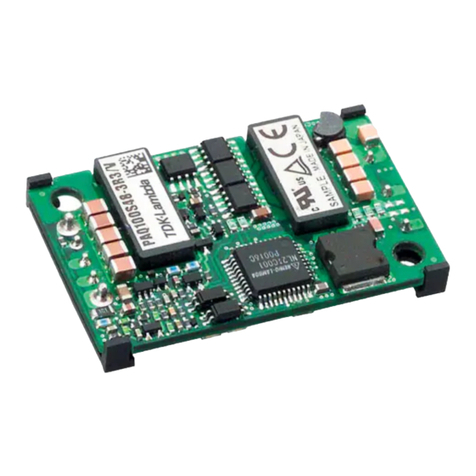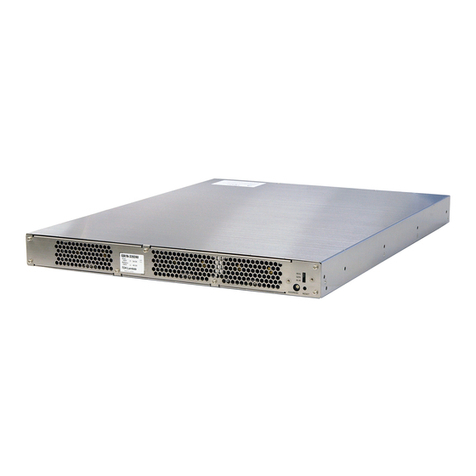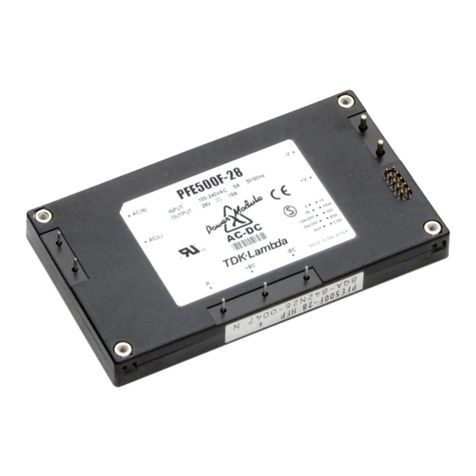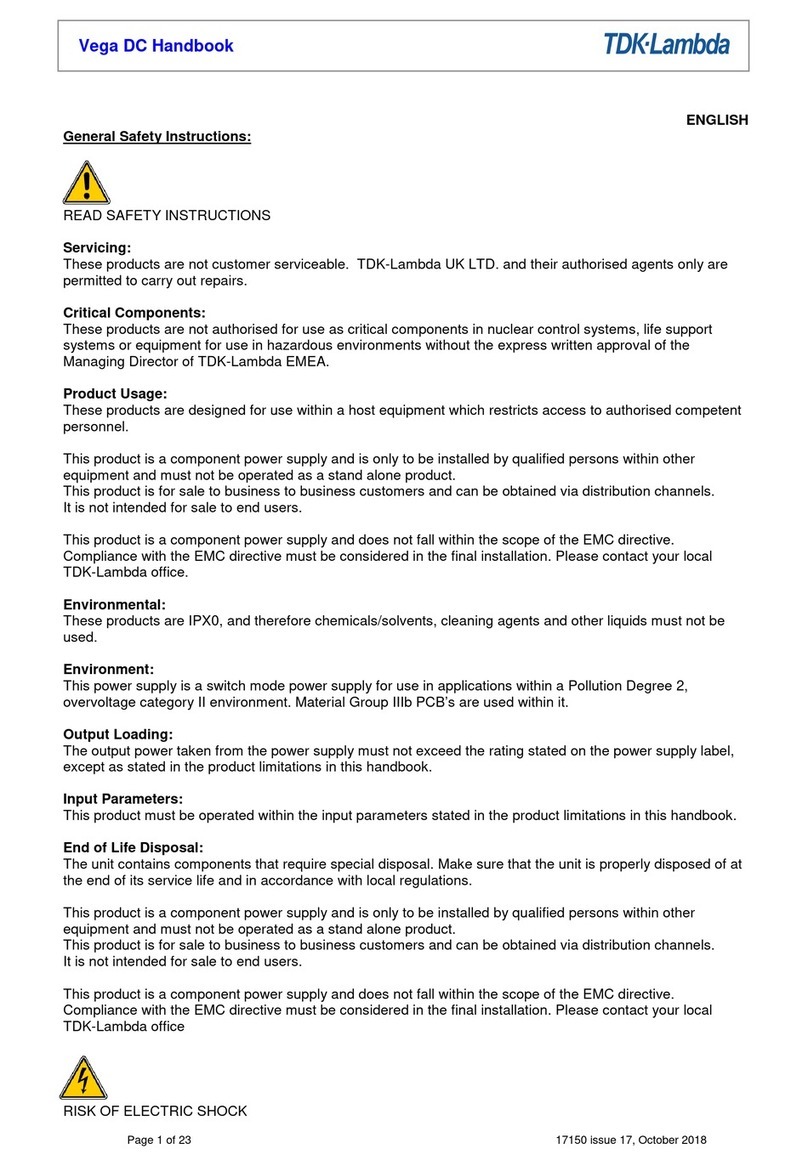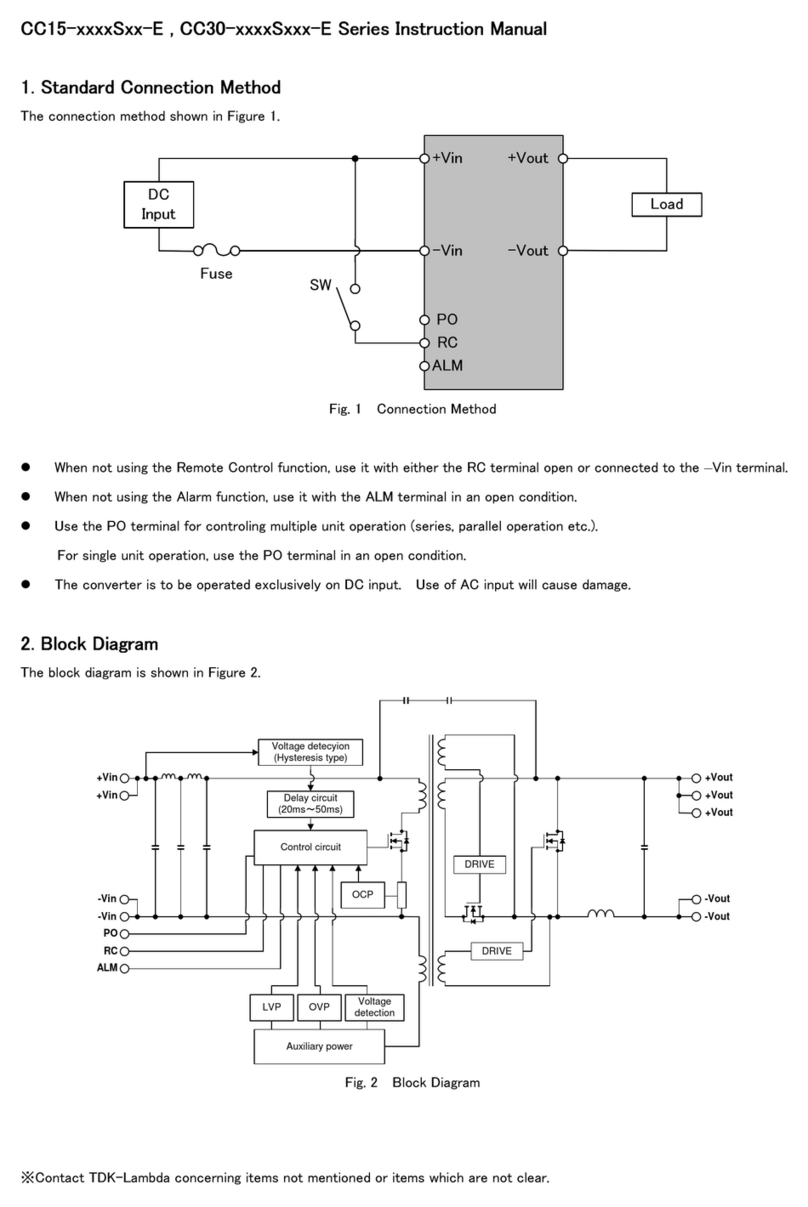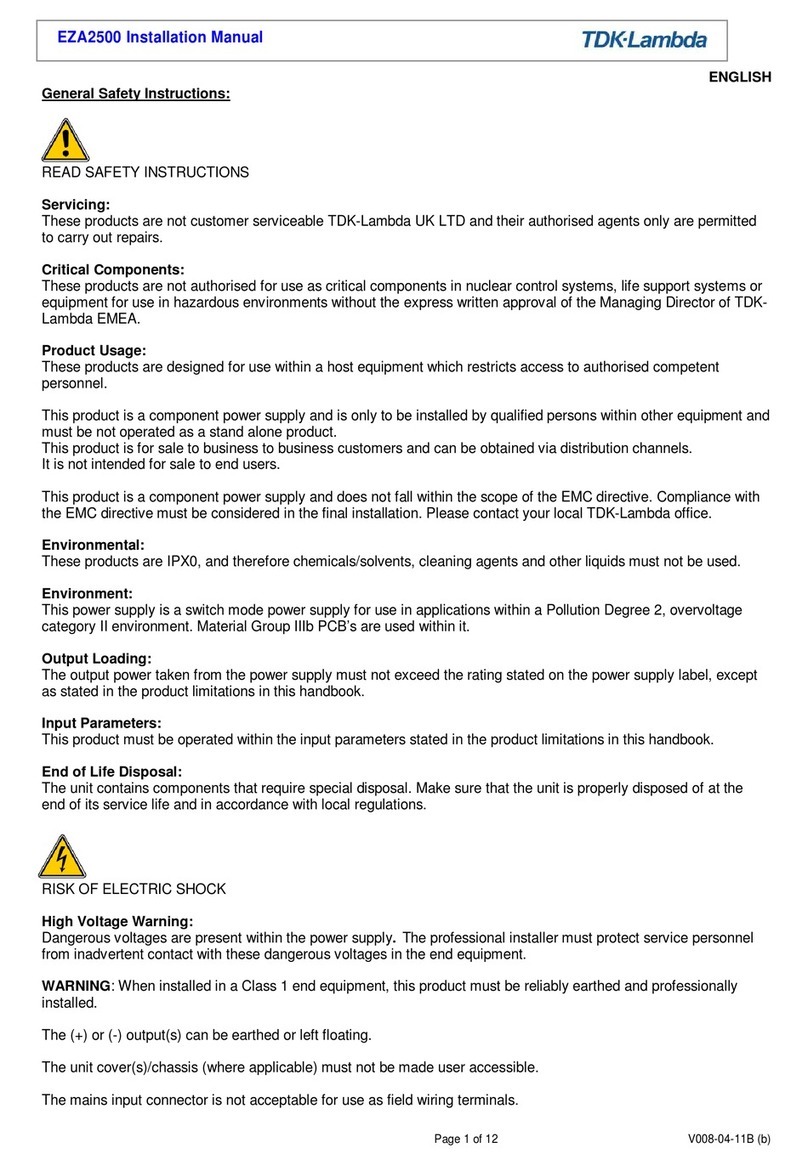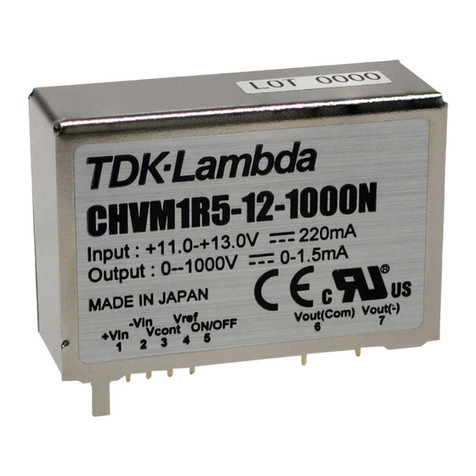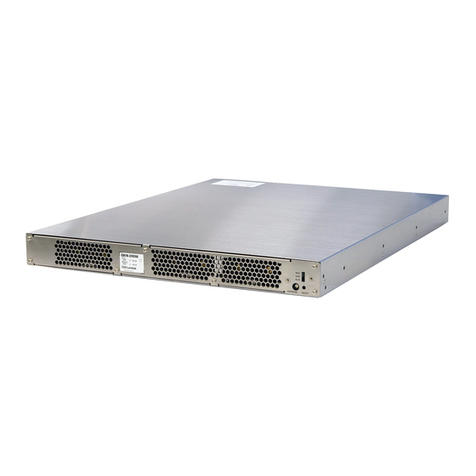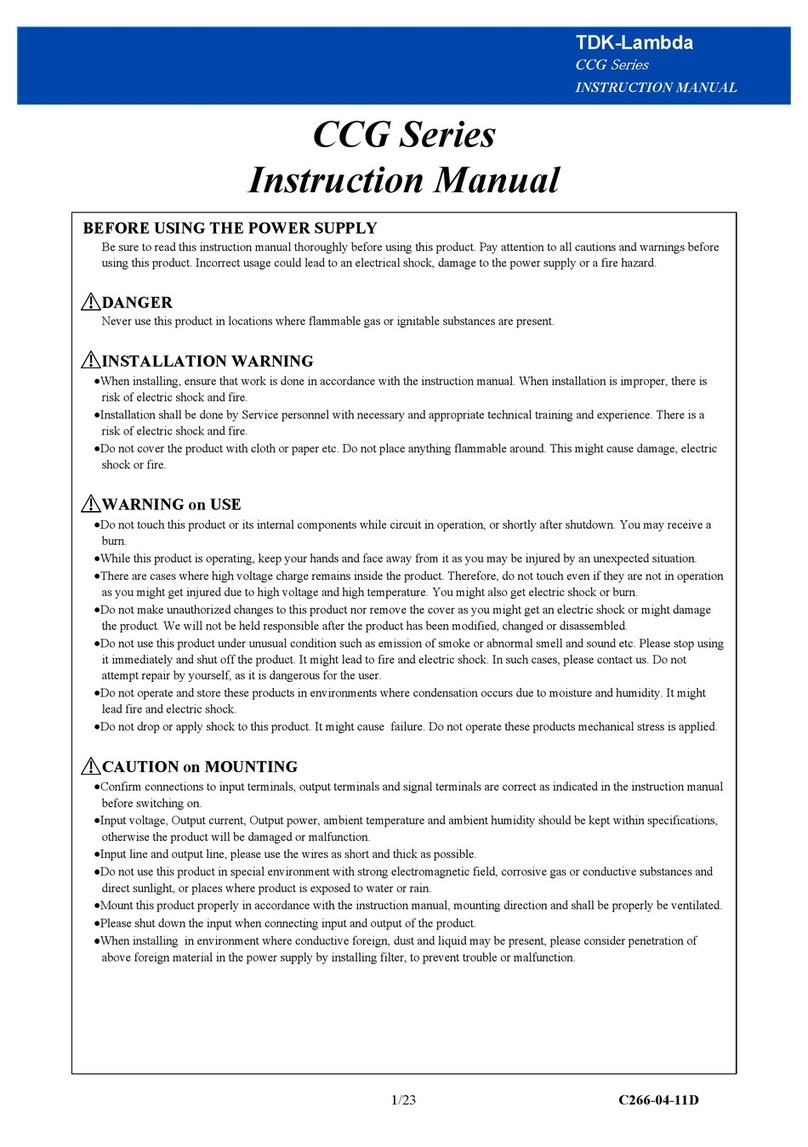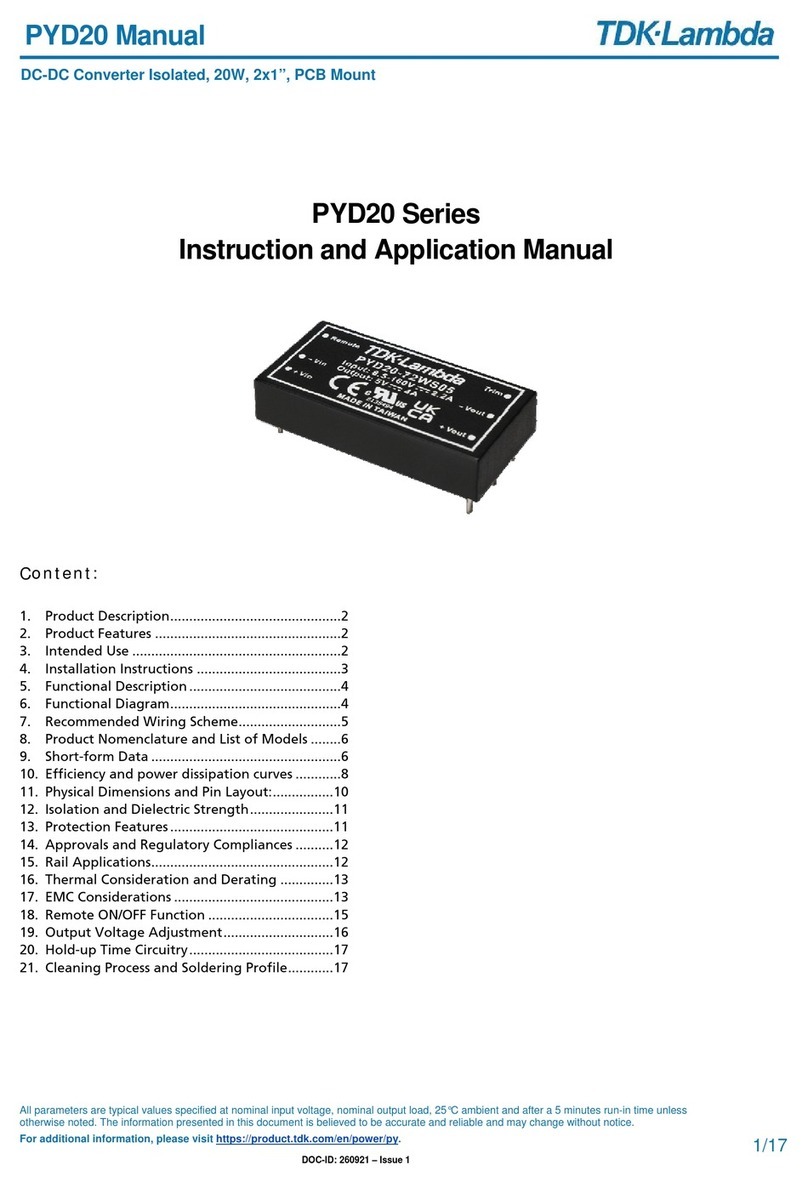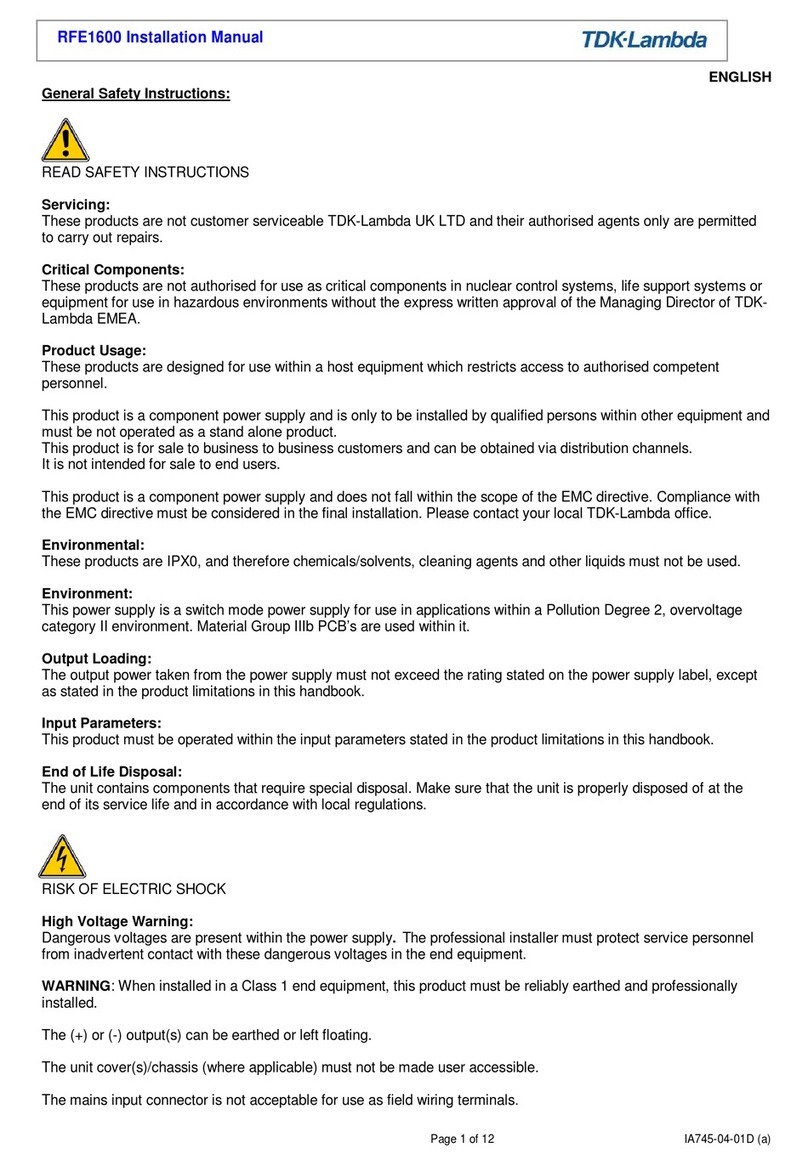
INSTRUCTION MANUAL
CCG15
・
30
Series
TDK-Lambda
<Page>
2/23
CAUTION on USE
·Product individual notes are shown in the instruction manual. If there is any difference with common notes, individual notes
shall have priority.
·Before using this product, be sure to read the catalog and instruction manual. There is risk of electric shock or damage to the
product or fire due to improper use.
·Input voltage, Output current, Output power, ambient temperature and ambient humidity should be kept within specifications,
otherwise the product will be damaged, or cause electric shock or fire.
·For products without built-in protection circuit (element, fuse, etc.), insert fuse at the input to prevent smoke, fire during
abnormal operation.
·For externally mounted fuse do not use other fuses aside from our specified and recommended fuse.
·This product was made for general purpose electronic equipment use and is not designed for applications requiring high safety
(such as extremely high reliability and safety requirements. Even though high reliability and safety are not required, this
product should not be used directly for applications that have serious risk for life and physical safety. Take sufficient
consideration in fail-safe design (such as providing protective circuit or protective device inside the system, providing
redundant circuit to ensure no instability when single device failure occurs).
·When used in environments with strong electromagnetic field, there is possibility of product damage due to malfunction.
·When used in environment with corrosive gas (hydrogen sulfide, sulfur dioxide, etc.), there is possibility that they might
penetrate the product and lead to failure.
·When used in environments where there is conductive foreign matter, dust or liquid, there is possibility of product failure or
malfunction.
·Provide countermeasure for prevention of lightning surge voltage as there is risk of damage due to abnormal voltage.
·Take care not to apply external abnormal voltage to the output terminals and signal terminals. Especially, applying reverse
voltage or overvoltage more than the rated voltage to the output might cause failure, electric shock or fire.
·Never operate the product under overcurrent or short circuit condition. Insulation failure, or other damages may occur.
·The application circuits and their parameters are for reference only. Be sure to verify effectiveness of these circuits and their
parameters before finalizing the circuit design. Moreover, we will not be responsible on application patent or utility model.
·Excessive stress could cause damage. Therefore, please handle with care.
·Use recommended external fuse to each products to ensure safe operation and compliance with the Safety Standards to which
it is approved.
·The input power source to this product must have reinforced or double insulation from the mains.
·This product has possibility that hazardous voltage may occur in output terminal depending on failure mode. The output of
these products must be protected by over voltage protection circuit in the end use equipment to maintain SELV.
Note
·Consider storage of the product at normal temperature and humidity avoiding direct exposure to sunlight at environment with
minimal temperature and humidity changes. Storage of product at high temperature, high humidity and environments with
severe changes in temperature and humidity might cause deterioration, and occurrence of condensation in the product.
·When disposing product, follow disposal laws of each municipality.
·Published EMI (CE, RE) or immunity is the result when measured in our standard measurement conditions and might not
satisfy specification when mounted and wired inside end-user equipment.
·Use the product after sufficiently evaluating at actual end-user equipment.
·If products are exported, please register the export license application etc. by the Government of Japan according to Foreign
Exchange and Foreign Trade Control Law.
·The information in the catalog or the instruction manual is subject to change without prior notice. Please refer to the latest
version of the catalog or the instruction manual.
·No part of this document may be copied or reproduced in any form without prior written consent TDK-Lambda.
